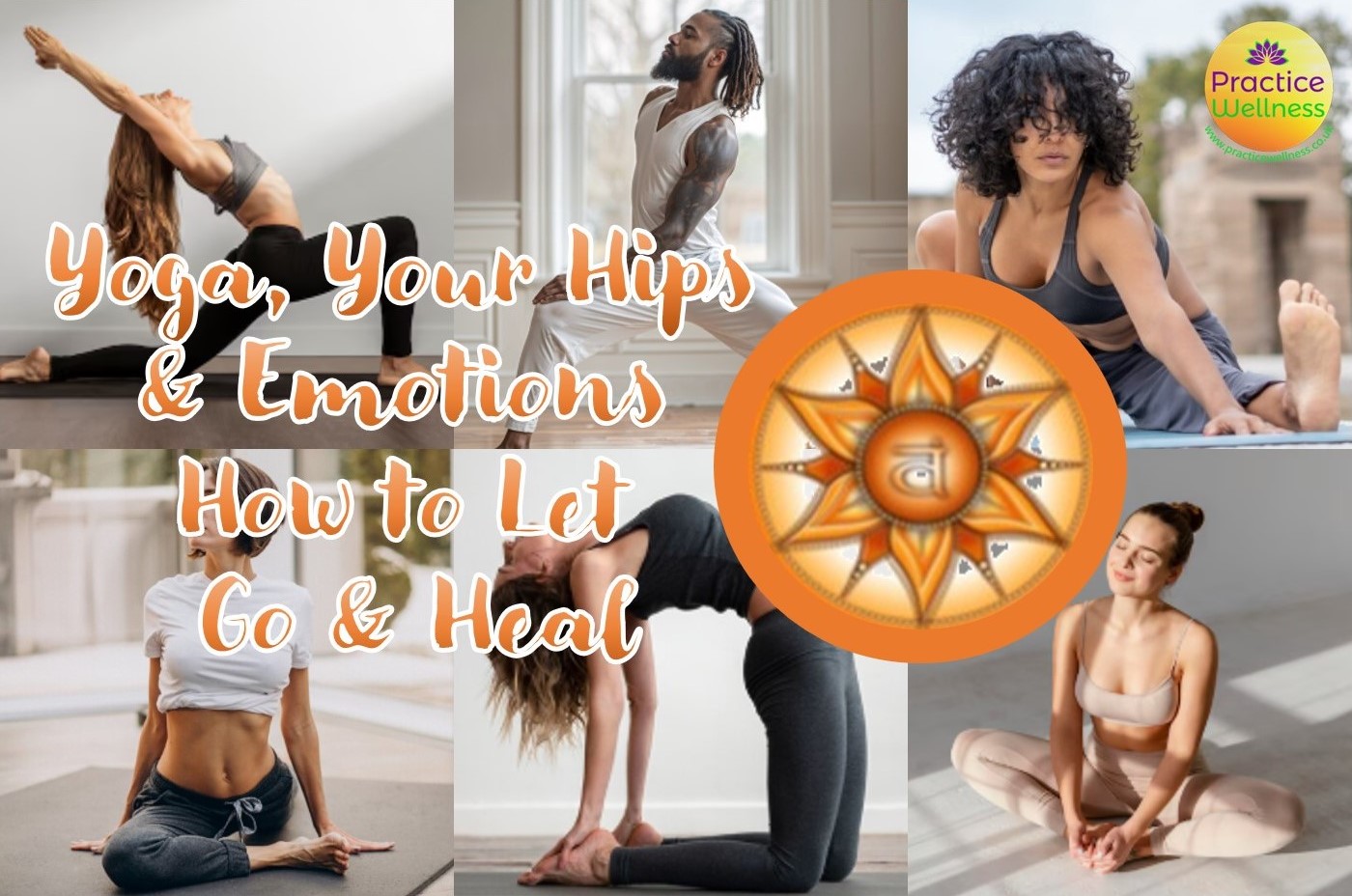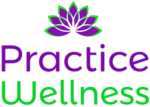There’s something going on with yoga, tight hips and emotions. It is often said that we store emotions, even trauma, in our hips. It is also believed that hip opening yoga asanas (postures) could help release emotions, sometimes with surprising intensity. Maybe you have a firsthand experience or know something about it.
Today, I would like to explore this topic further, including the relationship with Sacral Chakra (one of the body’s main seven energy centres), Svadishthana, located right in the centre of the pelvis. So, is there any truth in this? Let’s go down the rabbit hole together.

Hips anatomy
First, let’s cover the basics. The hip is the area on each side of the pelvis. The joint is one of the largest in the human body, responsible for bearing weight, stabilising the core, and moving the upper leg. To achieve this, the hips make use of a set of muscles.
The Psoas
This muscle is located at the front of the inner hip. It is primarily responsible for hip flexion, and together with the core muscles, helps with body balance and stability.
Abductors
Another set of muscles that contribute to hip mobility are abductors, located in the outer hip. Abductors help move the thigh away from the body’s midline, and are supported by the gluteus medius and gluteus minimus muscles.
Adductors
These muscles are located in the inner thighs and help move the leg in toward the midline. Because adductors are considerably large muscles (bigger than hamstrings), they can generate incredible power and are capable of pulling bones out of alignment, if they get tight.
How do you get tight hips, and how do they impact health?
Studies show that prolonged sitting is one of the main causes of limited hip extension and associated pain and discomfort. In other words, insufficient mobility.
Other causes are doing exercises which repeat the same motion and limit joint movement. A couple of good examples are cycling and running which are undoubtedly excellent forms of exercise but do not offer the full range of hip movements and can lead to tight hips.
In time, tight hips can begin to cause pain and impact daily activities like walking and climbing stairs. They can also cause an anterior tilt of the pelvis which results in poor posture and misalignment of the head and neck.
This is why it is important to exercise both sides of abductors, for example, because if one side is not strong enough to hold the pelvis levelled, the opposite hip will drop down while walking. Or it can cause other muscles to compensate and become overly tight. Maybe, that’s reason your yoga teacher always reminds you to “do what you did on the other side”!
So how do emotions come into the picture?
There are multiple ways in which we can store emotions, or trauma, in the hips.
Firstly, as studies state, emotions are electrochemical signals that carry emotional messages throughout the body. They are then expressed, experienced, and stored within the body and mind. Point to note, certain emotions are associated with specific areas of the body (same logic as chakras).
Secondly, the kidneys and adrenal glands are both in the same area as the psoas muscles, and contribute towards the tightening of these muscles. The kidneys filter toxins in the body and the adrenal glands control our fight or flight response to perceived danger. Hence when we’re under any kind of stress, the psoas muscle responds by tightening, and possibly causing the kidneys to hold on to toxins.
Thirdly, the hip region is associated with the sacral chakra, or Svadhisthana, an energetic centre responsible for intimacy, sexuality and creative energy. Svadishthana is related to the natural element of water, and how we relate to our emotions as well as the emotions of others. If this chakra is imbalanced or blocked because prana (life force) is not moving freely through it, it could lead to emotional instability and a block in creativity and sexuality.
How do we balance the sacral chakra?
Different methods can be applied to unblock and balance the sacral chakra.
Visualisation and breathing techniques
Visualisation is a useful technique that can be applied as part of your meditation. In my Chakra Yoga classes, we visualise a vortex of energy around the area of the body where the chakra is located, in its specific assigned colour and then we send healing thoughts and repeat affirmations. We also practice a variety of yogic techniques such as pranayama (breathing techniques), mantra chanting and mudras especially recommended for the chakras.
Hip openers
Practice different types of yoga asanas that not only work on the psoas, abductors and adductors, but also enhance the flow of prana (life force) and blood flow to the lower body. When we use our muscles in new ways, and use the full range of our joints, the body starts to open up, allowing stagnant energy to start to flow, often triggering a corresponding release of emotional blockages. This can be quite an emotional experience!
Body awareness
Practicing yoga asanas, including hip openers, mindfully increases body awareness and promotes a deeper connection with oneself. When we stay focused on the body and chakras during a mindful yoga practice, we get a better understanding of what works for us, which emotions or trauma we are holding and letting go. In the long term, yoga helps us to adopt good habits that we can draw from throughout the day, such as maintaining a good posture.
Hip opening yoga asanas to practice
In summary, yoga offers proven practical methods to strengthen our muscles in ways that some other forms of exercise are not able to do like cycling and running. Yoga asanas can help to realign the pelvis, improve back problems, overall posture and balance; so we can enjoy everyday activities without aches and pains.
In addition to the more obvious physical benefits, different yogic techniques can also support the body to move life force energy and release trauma, resulting in a healthier state of mind, body and spirit.
Here are my recommended yoga asanas for tight hips and releasing emotions – along with their Sanskrit names. And by the way, I regularly teach these in both my yang (vinyasa) and yin classes.
Yin & Yang asanas
Swan – Hamsasana
Butterfly (seated) – Baddha Konasana
Butterfly (reclining) – Supta Baddha Konasana
Happy baby – Ananda Balasana
Figure four – Eka Pada Utkatasana
Squat – Malasana
Wide forward fold (seated) – Upavistha Konasana
Yang asanas
Triangle – Trikonasana
Goddess – Utkata Konasana
Wide forward fold (standing) – Prasarita Padottanasana
Devotion (crescent moon low lunge) – Anjaneyasana
Camel – Ustrasana
Bridge – Setu Bandha Sarvangasana
Yin asanas
Supported bridge – Salamba Setu Bandhasana
Dragon – Utthan Pristhasana
Frog – Mandukasana
Deer – Mrigasana
Chakra balancing yoga classes in Bath
I have been running Chakra Balancing Yoga Flow classes in Bath since August last year and received great reviews. This is a 7-week course focussed on the 7 main chakras. We spend no more than 10 minutes on visualisation and mindfulness, before we move on to asanas that unblock and activate energy centres.
My next course will start this week, Thursday 3rd July, with the root chakra, followed by sacral chakra on 10th July. Both of these classes will focus on hip openers. Whether you are experiencing tight hips, or not, you are welcome to join us and experience the benefits of hip openers firsthand. Learn more and book your spot.
Do you have questions or comments? Feel free to post them below or email me from the contact page.
Have a wonderful brand new month!
Sossi x

